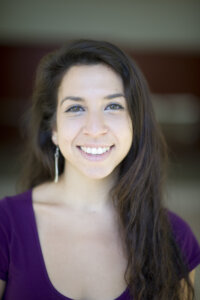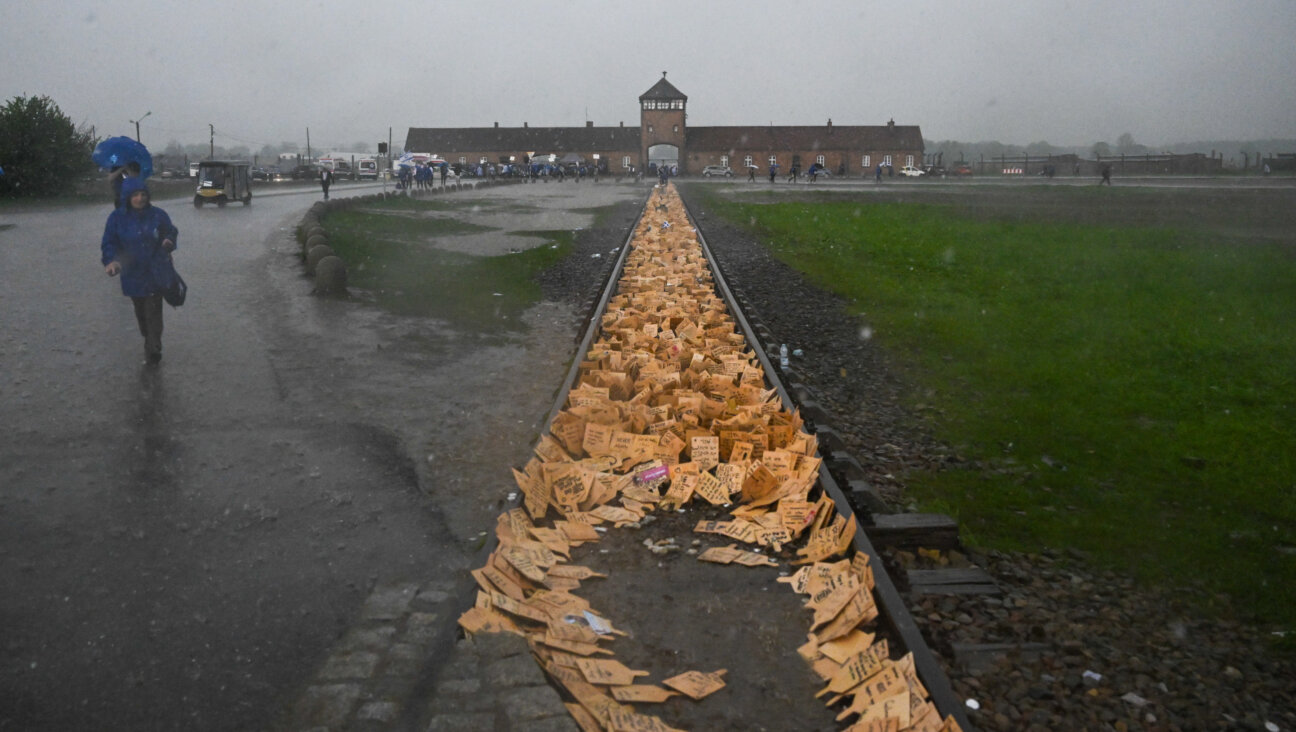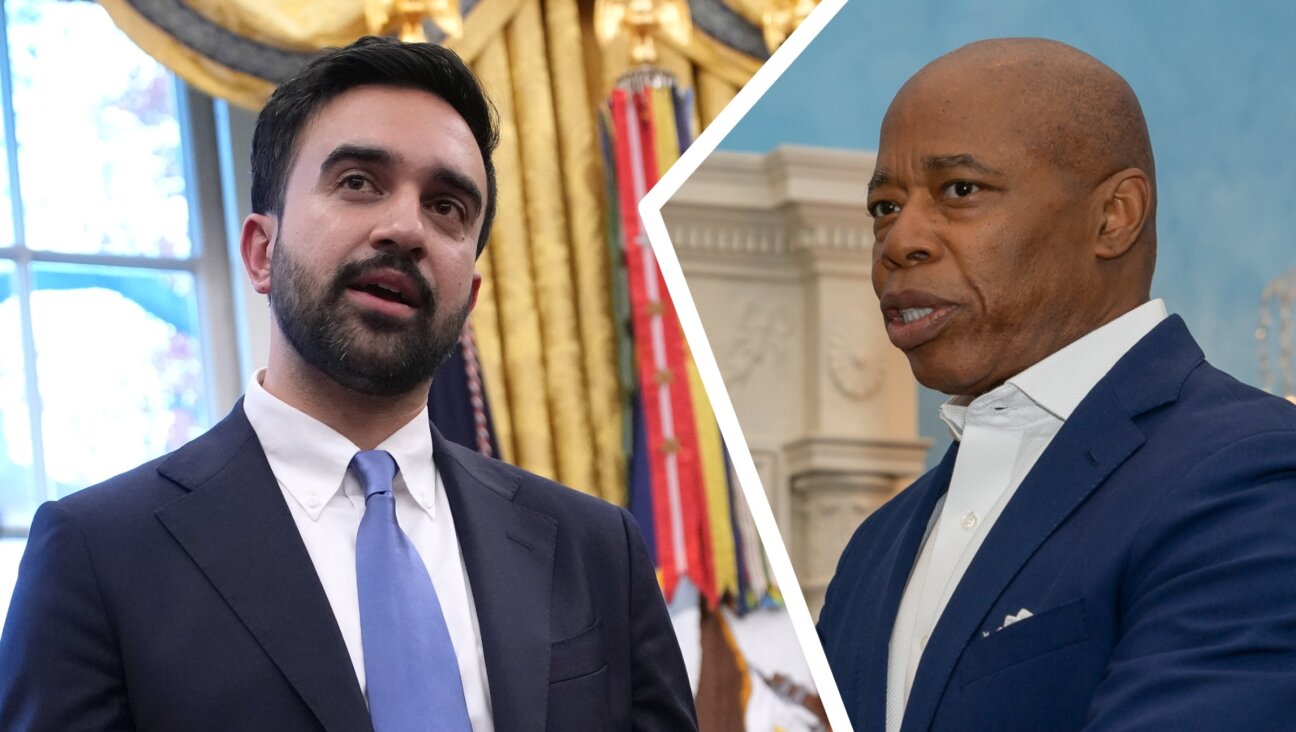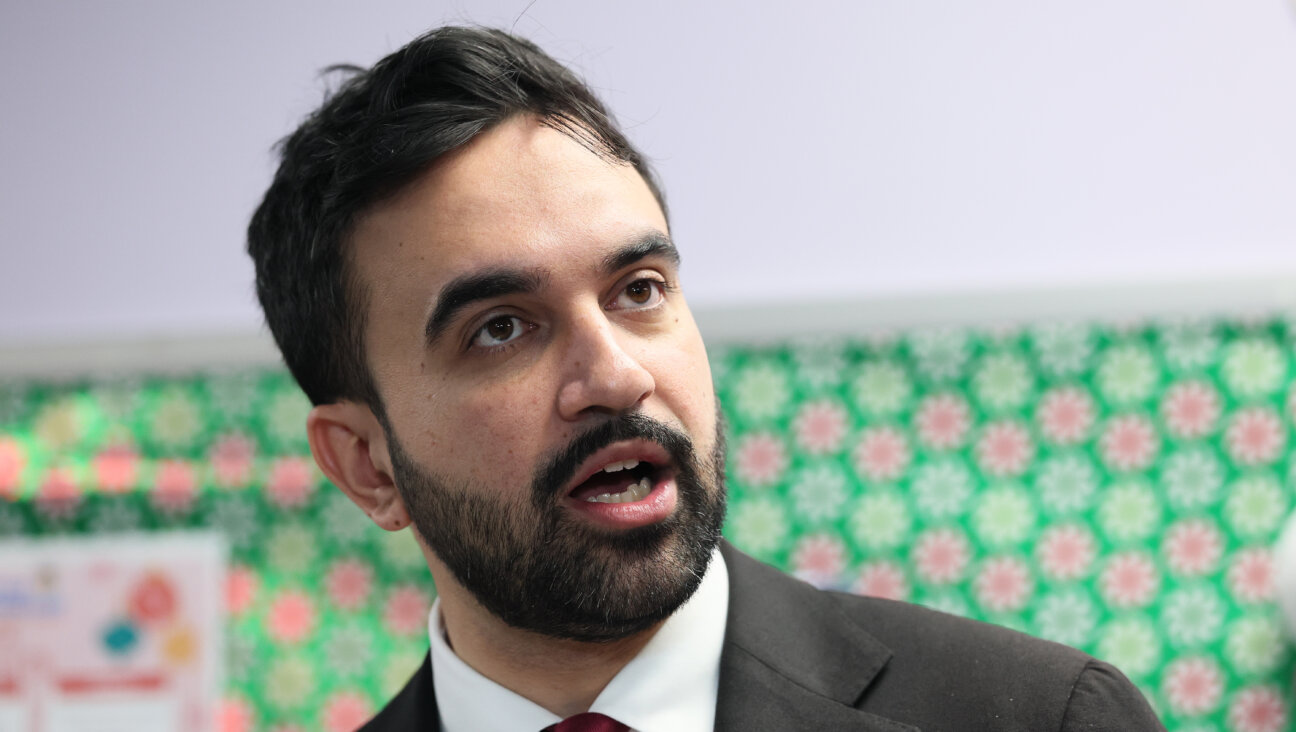How these intimate family photos helped to bridge a Trump-era divide

Graphic by Angelie Zaslavsky
When Donald Trump was inaugurated, Gillian Laub was with her parents in Washington D.C. “Well, not with them,” Laub says. Her parents were Trump fans there to make America great again. Laub was there to photograph the Women’s March that took place the day after inauguration. But while she was in D.C., Laub also took pictures of her family, as she’s been wont to do for more than two decades, before and after a charged election made many of the people she loves most in the world so much harder to understand.
She captured a portrait of her parents seated in a pair of bright red armchairs against an ornate display of illuminated whiskey bottles in the Watergate Hotel’s lobby bar, drinks in hand, waiting for the festivities at an inaugural ball. They were glammed up from head to toe, her father in a jet-black suit and her mother in a white pantsuit — not, most likely, intended to emulate Hillary Clinton’s symbolic outfit of choice.
The photograph — taken as a group of pink-pussy-hatted marchers nearby wondered aloud who “those people” were — is one of dozens that make up Laub’s new book “Family Matters,” and an exhibit at the International Center of Photography (ICP) in New York City. Both tell the story of Laub’s warm, affectionate, expressive and extremely tight-knit family, starting in the 1990s and going through these last divisive years that tested them in ways they couldn’t have expected.
Later on the night of Trump’s inauguration, Laub was standing by the hecklers who were berating people like her parents as they entered and exited celebratory events. When her parents stepped back out into the cloudy January night after their ball, they wore big smiles, waved and blew kisses, which Laub returned from behind her camera with a grin as she shook her head slightly.
“Oh god,” she muttered, almost imperceptibly.
Laub hadn’t anticipated the political turn her family story would take. “Photography has always been my way of exploring the world, exploring myself, exploring people,” Laub said. But when Trump came into their lives, “it took on a whole new meaning.”
“My Pictures Are Always About People”

‘Grandpa Helping Grandma Out, 1999’: A photo from Gillian Laub’s ‘Family Matters.’ By Aperture, © Gillian Laub
Born in Chappaqua to a Jewish family in the real estate and summer camp businesses, Laub, 46, got her first camera from her grandfather when she was six years old. “It’s kind of a cliché,” she said, but it’s where she got her start. Looking back at some of those very first Polaroids she snapped 40 years later, she said, “I was really photographing people the same way I’m doing it now. I would ask people to pose for me, for my camera. And they would sit as if it’s a portrait.”
Laub got her undergraduate degree in comparative literature at the University of Wisconsin–Madison before returning to New York to study photography at ICP.
“I felt most alive, always, when I was taking pictures,” she said. “I liked engaging with people — my pictures are always about people.”
Over the course of her career, Laub has photographed a long list of public figures and celebrities — including Ariel Sharon for the cover of The New York Times Magazine in 2004, Alexandria Ocasio-Cortez for Interview Magazine in 2018, and Mary J. Blige for Cultured Magazine last year. But she’s also told stories about people whose names and faces aren’t immediately recognizable. During the second intifada, for example, she spent years photographing and speaking with Israeli Jews, Israeli Arabs, Lebanese families, and Palestinians to understand the impact of the conflict on individuals and their families, a project that culminated in her first book, “Testimony,” published in 2007.

Documenting Her Family: Born in Chappaqua to a Jewish family in the real estate and summer camp businesses, Gillian Laub got her first camera from her grandfather when she was six years old. By Julianne Nash
“I admire how hard she works to understand the emotional and psychological levels to stories that you might read in passing,” said Lesley Martin, creative director at the foundation and photobook publisher Aperture, who worked with Laub on both “Testimony” and “Family Matters.” “She’s really good at peeling back the layers and finding these threads of how individuals’ psychology informs these topical and newsworthy things.” Laub’s portraits are “so much about the social context, the emotional context, environmental context,” Martin added.
All along, Laub has also been pointing her camera at her family. She didn’t set out with a particular project in mind or even a conscious decision to make her family her subjects; it was just her natural instinct. “At times it was a way of engaging more with people. Maybe, at times, it was a way of hiding behind the camera,” she said. “It was my way of finding my place in the world.”
So she photographed the brises, the bar mitzvahs, the weddings, the holidays and some of the quiet, everyday moments, too. Her family got used to it, though she’s heard her fair share of, “Enough, Gillian!” over the years. “Ritual and celebration is so important to my family, and I love that. And I wanted to document that and celebrate that,” she said.
“Life is about change and loss,” she added. “So hopefully the camera is the instrument to actually capture and hold on to certain moments in time and people.”
“Not a Great Time”

Before the Wedding: “Wedding Dress Fitting, 2008” from Gillian Laub’s ‘Family Matters.’ Courtesy of Aperture, © Gillian Laub
In June 2016, Laub gave birth to her second daughter, who had a heart condition. One day, while in the cardiologist’s office, she got a text from her father: a photo of him at a Trump fundraiser. It’s a moment she remembers vividly and describes in “Family Matters” as a turning point, this declaration of support coming from a man who, as Laub writes, “will regale anyone with his signature speech about why Bill Clinton was one of America’s best presidents.”
Laub’s mother, who in her youth was a self-professed “flower child,” would start to sound a little bit like a Fox News anchor. And her parents, who “had always voted for mainstream politicians — Democrats and Republicans,” weren’t the only Trump fans — there was also her sister (at first), her sister’s husband, her nephew, and so many of the people she otherwise felt closest to.
The months that followed were filled with acrimonious family group texts, fraught conversations, an election night that was jubilant for some members of the family and devastating for others, and a Thanksgiving dinner Laub almost didn’t attend.
Around the time of the inauguration, Laub heard from the editors of Pop-Up Magazine, conceived as an evening of multimedia storytelling performed onstage for a live audience. Did she have any stories to share? Maybe something related to all her family pictures?

Early Polaroid: “I was really photographing people the same way I’m doing it now,” Laub says now, “I would ask people to pose for me, for my camera. And they would sit as if it’s a portrait.” By © Gillian Laub
“I was like, not a great time to ask me that,” Laub said. “I had a newborn. And I had a four year old. And I was navigating this tension with my family. And I hadn’t processed any of it, you know, I was just kind of like in survival mode.”
It’s not that she hadn’t shared images of her family before. She’d published her first family photo in The New York Times Magazine in 1999 and shown an entire exhibit of family photos titled “An American Life” in 2007 at the Bonni Benrubi Gallery in New York. But this was different. She wasn’t sure if she was ready to unpack what she was grappling with in public. Ultimately, she was convinced, in part, by Pop-Up’s “live” nature — it didn’t get posted online or shared on social media; it was strictly for the people who showed up.
“I was pretty terrified,” said Laub, who used photographs, video clips, recorded voicemails from her family, and her own narration to weave together a nine-minute story onstage. “I remember telling my parents — they knew I was doing this, but I said, ‘I don’t think I feel comfortable having you in the audience.’” However, the reception she got in the cities that preceded New York on the tour buoyed her. “In such a divisive moment in time, it didn’t add to the divisiveness,” she said. People were connecting to the story. And with her family, seeing them humanized rather than vilified.
“People would come up to me after the Pop-Up, and say, ‘I never thought I could like Trump supporters. I love your family,’” Laub said.
“With all of my work, I like to challenge the viewer,” she said. “I have to approach my family with the same kind of empathy and rigor that I do my other work,” she added — and she also had to demand honesty and vulnerability from herself. “I felt like it wasn’t fair of me to be putting my family’s life out there in a public way, without really looking at my own self.”
She invited her parents to the last show in New York. “It was really, really, really emotional. And they loved it,” she said.
Sitting in the audience, her mom beamed, her dad’s eyes sparkled with tears and looked as if they might overflow as he watched his daughter intently, and both of them clapped and cheered enthusiastically when it was done. Laub felt so lucky. They weren’t concerned with their egos, they’d just shown up “with their usual support and love — you know, they have enormous capacity for love,” she said. “That’s when I realized, there’s really something there. Making photographs and telling stories is really a way to engage in difficult conversations. And that’s what I’ve always done.”
Trump was only a few months into his presidency at that point, and Laub wanted to document what would unfold over the next few years. “I knew it was an important time historically, and for my family,” she said. She heard so many stories from people who’d stopped speaking with family members. “I found that deeply, deeply, deeply sad,” she said, and she vowed it wouldn’t happen to her. “I almost thought of it like, ‘He is not going to have that power.’”
She also got a slew of requests from folks going through similar experiences asking how they could share her piece with their families. “And they weren’t able to,” she said. Pop-Up only happens live, and then it’s gone. “That really actually propelled me into being like, ‘OK, how do I put this out into the world?’”
“And Then the Pandemic”

“My Quarantine Birthday” A photo from Gillian Laub’s ‘Family Matters.’ By Aperture, © Gillian Laub
Laub has a huge closet in her home office filled with stacks upon stacks of rectangular boxes each about an inch tall. The boxes are labeled: Father’s Day, Thanksgiving, grandma, Slater’s bris, and on and on. Inside are years’ worth of contact sheets.
The first step toward making “Family Matters” the book, and later the exhibition, both outgrowths of the Pop-Up piece, was printing out piles of eight-by-tens “this high,” said Laub, motioning to indicate towers too big to be visible in the Zoom frame she was in. It took years to pore over them and consider, select, debate and edit, then to write and rewrite the words that accompany the pictures. Laub has always incorporated text into her work. And although this is a photobook, it’s meant to be read “from cover to cover,” she said. “The words were just as important.”
The book was originally slated to be released last fall to coincide with the 2020 election. “In March, I was looking at final layouts of the book,” she said. “And then the pandemic.”
Laub felt like she had to see the narrative through to a more natural ending, and her publisher agreed to delay the book. COVID opened up “a whole other area of the story and not an ancillary one, but really core to the way in which, again, these divisions have fractured families and the country,” Martin said. “The story was still so in motion, it didn’t make sense to bring it to an end.”
And so Laub documented the physical separation from her family alongside the political separation that mounted as protests erupted in the wake of George Floyd’s murder and another election neared. In one photo, her parents stand outside a sliding glass door wearing masks and gloves, her father holding a birthday balloon and her mother holding a cake they’d come to drop off outside the door for Laub’s birthday as her younger daughter looks on from inside.
In some ways, Laub’s family is a stand-in for millions of American families. “What’s so fascinating about this is how you can read it as not really just about her family, but much more broadly about the very fraught politics of the United States and what seem like absolutely irreconcilable divisions,” said David Campany, who curated the ICP exhibition. But their extravagant lifestyle and “lavish kind of love,” as Laub has called it, also make them vibrant and compelling subjects.
“The family is kind of naturally theatrical and demonstrative,” Campany said. “Some family psychodramas or whatever you would want to call it don’t offer themselves to the camera,” he added. But Laub’s family certainly does. “All the emotions are larger than life, somehow, and it plays out in the pictures.”
Laub hopes the project inspires important conversations and “helps people navigate their own precarious relationships,” she said. “We’ve been through some really rough years.” Laub has already heard from a few people who are planning to share her book with family members as a way of reaching out and breaking the ice. “I know of somebody who’s actually giving this book to their brother, who they haven’t spoken to in a few years and hoping that maybe they can somehow accept each other and be in each others’ lives again.”
The Next Chapter

Dad Playing Golf: A 2019 photo from Gillian Laub’s ‘Family Matters.’ By Aperture, © Gillian Laub
This story doesn’t tie up in a neat package. Like families across America, Laub’s is still navigating emotional and sometimes difficult conversations. But it does feel like a new chapter has begun.
Laub has always loved the High Holidays for the new beginnings they signal and the reflection they spur. “It’s amazing that the book happens to be coming out at this time,” Laub says. “This is my favorite moment.” When we spoke a few hours before dinner on the eve of a new year, Laub and her family had just returned from her uncle’s lake house, a summer tradition they skipped last year because of the pandemic.
It’s a 2019 photo from the lake that closes the book. “I remember being there two years ago, being in a really conflicted state of mind when I took that picture,” said Laub, who didn’t see her uncle for two years partly because of COVID. This year, being back there and “having my aunt and uncle reading the book and everyone together discussing it, arguing over it, debating,” she said, struggling to put the feeling into words, “it was so special.”

By the Lake: A photo from Gillian Laub’s ‘Family Matters.’ By Aperture, © Gillian Laub
As has become typical in the last four or five years, there are forces both bringing families together and keeping them apart. Last year, Laub and her husband and daughters celebrated a small Rosh Hashanah with Laub’s parents as the pandemic dragged on, tensions mounted ahead of the 2020 election, and news of Ruth Bader Ginsburg’s death reverberated across the country. They broke the Yom Kippur fast outdoors the day before the first presidential debate.
“It felt so like there was so much at stake last year, it was so intense. And, again, it feels like we’re always on the precipice of something at this time of year,” Laub said. This year, with Delta wreaking new havoc and two young children who can’t yet be vaccinated, there still couldn’t be a huge holiday meal as in years past. But “there’s so much less tension than there has been, which is a bit of a relief.”
And though she decided to bring her camera to Yom Kippur gatherings to continue to chronicle her family’s story, she chose to leave it behind for Rosh Hashanah. “Tonight, I am just being present,” she said.
.
Stav Ziv is a journalist based in New York City whose work has also appeared in Newsweek, The Atlantic, Newsday, and the San Francisco Chronicle. She is currently a senior editor/writer at The Muse.
















